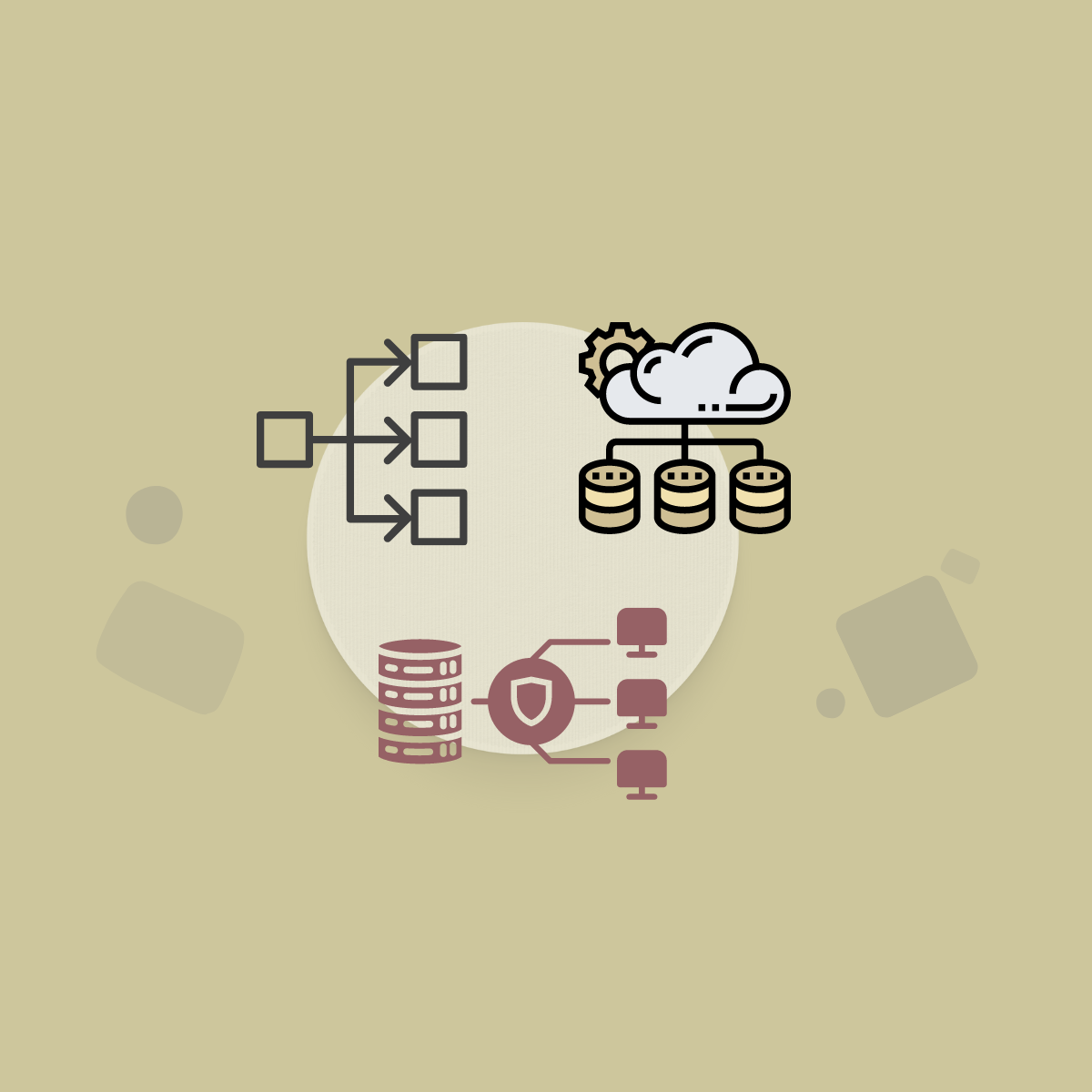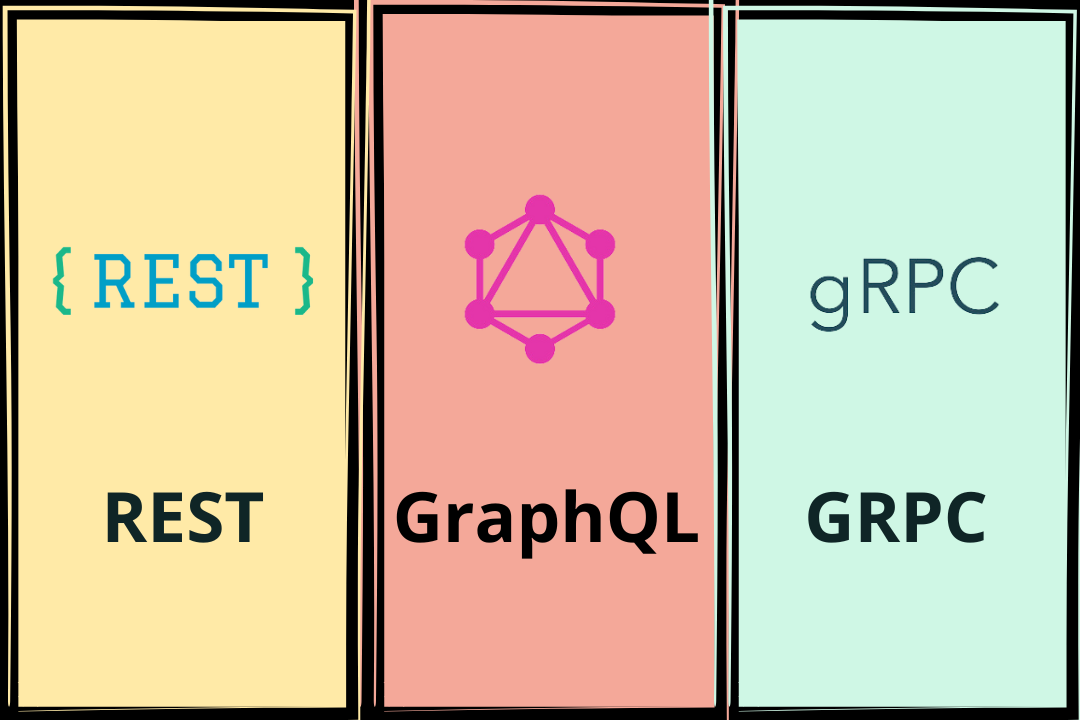10 Common Microservices Anti Patterns
10 Common Microservices Anti-Patterns #
Excerpt #
How to avoid the common microservices pitfalls
How to avoid the common microservices pitfalls
Microservice architectures offer scalability, flexibility, and resilience. Since each service is deployed independently, these architectures accelerate the process and help with quick release. However, these structures can create major challenges if they fail within the application.
Therefore, avoiding these pitfalls or microservice anti-patterns is essential for efficient microservice architectures.
In this guide, we highlight the common microservices anti-patterns and suggest practical solutions to avoid them. So, let us jump right in!
Quick List of Anti-Patterns #
Here’s a quick run-down of the common microservice anti-patterns:
- Monolith in Microservices: Attempting to adopt a microservices architecture without fully decoupling services affects your scalability and fault tolerance, often leading to a monolithic structure hidden within microservices.
- Chatty Microservices: Microservices that communicate too frequently or inefficiently cause performance bottlenecks due to excessive network chatter.
- Distributed Monolith: Services that are so tightly coupled in their deployment and operation that they lose the benefits of modularity, effectively acting as a monolith spread across multiple services.
- Over-Microservices: Fragmenting the system into too many microservices leads to complexity in management and communication.
- Violating Single Responsibility: Microservices that take on multiple responsibilities contradict the Single Responsibility Principle and complicate the architecture.
- Spaghetti Architecture: A lack of clear structure and boundaries between services leading to a tangled mess of dependencies and interactions.
- Distributed Data Inconsistency: Challenges in maintaining data consistency across services often due to asynchronous communication and the lack of a single source of truth.
- Tight Coupling: Microservices that are too dependent on each other undermine the benefits of independence and modularity.
- Lack of Observability: Insufficient monitoring and logging making it difficult to understand and diagnose issues within the microservices architecture.
- Ignoring Human Costs: Overlooking the impact of architectural decisions on the development team can lead to burnout, decreased productivity, and morale issues.

Grokking Microservices Design Patterns
Grokking Design Patterns for Engineers and Managers
What Causes Anti-Patterns and How To Avoid These Pitfalls #
Microservice architectures enable applications to perform smoothly. However, if you don’t implement them properly, it can result in anti-patterns.
Recognizing and avoiding microservice anti-patterns is important for building a resilient, scalable, and efficient microservices architecture.
Let us go through each of the common anti-patterns to learn the causes and solutions:
1. Monolith in Microservices #
The term “Monolith in Microservices” describes a situation where, despite being broken down into microservices, the system behaves like a monolith because the services are overly interconnected and dependent on each other.
This usually happens when the principles of microservices are not properly implemented.
In microservices architecture, each service is supposed to be independent, handling a specific business function and communicating with other services in a well-defined, minimal manner, typically through APIs.
However, in the “Monolith in Microservices” scenario, services are so tightly coupled that they can’t operate or be deployed independently. They might share databases or have entangled business logic, leading to complexity and reducing the benefits of using microservices.
Reasons for Monolith in Microservices #
1. Improper Service Boundaries: Services are not designed around business capabilities but are instead divided based on technical layers or improper divisions, leading to shared databases and high dependencies.
2. Shared Data Layers: Microservices ideally should manage their own data independently. Sharing a single database among multiple services can lead to tight coupling, similar to a traditional monolithic architecture.
3. Centralized Management: If the deployment and scaling of services are handled in a way that doesn’t allow individual services to be managed independently, it defeats the purpose of microservices.
4. Common Frameworks and Libraries: Over-relying on the same frameworks and libraries across different services can lead to similar coupling issues, especially if changes in the framework affect all services.
Measures to Avoid This Anti-Pattern #
1. Define Service Boundaries Wisely: Ensure that each microservice is aligned with a specific business function or domain. Use domain-driven design (DDD) to define clear boundaries based on business capabilities, not just technical convenience.
2. Decentralize Data Management: Each microservice should own its database or a distinct part of the database. This practice, known as database per service, helps to ensure services remain loosely coupled and can evolve independently.
3. Encourage Independent Deployments: Design your CI/CD (Continuous Integration/Continuous Deployment) pipelines to support independent deployments of microservices. Each service should be deployable and scalable on its own, without impacting others.
4. Avoid Shared Libraries: While some level of shared code is inevitable (for example, communication libraries), limit the use of shared business logic libraries that could couple services tightly. Instead, duplicate some of the code if it means services can evolve independently.
5. Adopt an API Gateway: Implement an API gateway to handle requests for different microservices. This helps maintain loose coupling by providing a single entry point into the system and simplifying the communication between client applications and backend services.
By taking these measures, organizations can truly leverage the benefits of microservices, such as improved scalability, easier maintenance, and faster deployment cycles, while avoiding the pitfalls of creating a “Monolith in Microservices.”
Grokking the System Design Interview
Grokking the Advanced System Design Interview
2. Chatty Microservices #
“Chatty Microservices” refers to a design where microservices frequently communicate with each other, often for small granular data requests and responses.
This pattern can lead to performance issues, as each call introduces network latency, overhead, and complexity in managing multiple service interactions for completing even simple tasks.
Ideally, microservices should be designed to be as self-contained as possible, minimizing dependencies on other services for their operations.
Reasons for Chatty Microservices #
1. Fine-Grained Services: If services are split into too many small parts, they may need to communicate excessively to perform basic functions. This excessive granularity can increase the number of inter-service calls required to complete processes.
2. Improper Service Boundaries: Sometimes, services are not correctly scoped, meaning they can’t perform their functions without frequent interaction with other services. This often results from a misunderstanding of the domain or incorrect application of domain-driven design principles.
3. Lack of Aggregate Information: Services might be designed without considering the aggregate information needed by clients. This leads to multiple round trips between services to gather all necessary data, increasing response times and complexity.
4. Inefficient Data Management: Services may rely on others for data because they do not store enough local data or cache results, leading to repetitive calls for the same data.
Measures to Avoid This Anti-Pattern #
1. Correct Service Size and Boundaries: Ensure that each service is neither too small nor too large. Use domain-driven design to define services around a bounded context, making sure each service is cohesive and can fulfill its responsibilities with minimal dependencies on other services.
2. Implement API Gateways: Use an API gateway to create more efficient communication patterns. The gateway can handle requests that involve multiple services by aggregating results, reducing the number of calls that need to go back and forth between the client and services.
3. Use Data Aggregation Techniques: When a client needs to make multiple calls to different microservices, consider implementing a pattern like an aggregator microservice that makes those calls internally and combines the results before sending a single response back to the client.
4. Enhance Caching Strategies: Implement aggressive caching policies where possible to reduce the need for frequent data retrieval operations. Each service can manage a cache of data that is frequently requested, minimizing the need to fetch it repeatedly from other services.
5. Design for Bulk Operations: When designing APIs, allow for bulk operations where possible. For example, rather than requiring a client to make multiple calls to add items to a cart, provide an API that can accept multiple items in one call.
6. Asynchronous Communication: Where practical, use asynchronous communication mechanisms like event-driven architecture to reduce the need for synchronous, real-time, chatty interactions. This can help decouple services and reduce the direct dependencies among them.
By following these guidelines, you can design microservices that communicate efficiently and effectively, enhancing system performance and maintainability. This approach also ensures that services remain loosely coupled and scalable, which are key benefits of a microservices architecture.
Grokking the Coding Interview: Patterns for Coding Questions

Grokking Modern Behavioral Interview
3. Distributed Monolith #
A “Distributed Monolith” is a software architecture that appears to be a microservices architecture but lacks the benefits of true microservices because the services are too tightly coupled.
Essentially, it’s like having a traditional monolith system but spread across multiple services or locations.
This design results in a system where services are not able to operate independently, as changes in one service require changes in others, and deployments cannot be done independently without coordinating with other services.
Reasons for a Distributed Monolith #
1. Tightly Coupled Services: Services depend heavily on each other’s APIs or shared databases, making it impossible to update or scale one without affecting others.
2. Shared Codebases: Even though services might physically be separated, they share too much of the same code or libraries, leading to situations where changes ripple across multiple services.
3. Centralized Data Management: If all services interact with the same database without proper separation of concerns, it negates the independence that microservices aim to provide.
4. Coordinated Deployments: The need to deploy multiple services together rather than independently due to intertwined functionalities or shared dependencies.
Measures to Avoid This Anti-Pattern #
1. Enforce Service Independence: Design each microservice to be self-contained with its own domain logic and data management. This reduces the dependency on other services and allows each service to be developed, deployed, and scaled independently.
2. Use Domain-Driven Design (DDD): Apply DDD principles to correctly identify bounded contexts and ensure that microservices are designed around business capabilities. This helps in achieving clear boundaries and responsibilities for each service.
3. Decentralize Data Management: Adopt a database-per-service model where each microservice manages its own database. This approach avoids the pitfalls of having a single database that all services depend on, which can create tight coupling.
4. Adopt Asynchronous Communication: Where feasible, use asynchronous communication patterns such as event-driven architecture. This reduces direct dependencies among services, as they communicate via events rather than direct calls (synchronous communication).
5. Implement API Gateways: Use an API gateway to handle requests and direct them to the appropriate services. This can abstract the complexity of interactions between services from the client and reduce direct dependencies among services.
6. Independent Deployment Pipelines: Create separate deployment pipelines for each microservice. This ensures that each service can be deployed independently of others, supporting faster iterations and better scalability.
7. Monitor and Enforce Coupling: Regularly review and monitor the level of coupling between services. Use tools and metrics to understand how changes in one service affect others and take corrective actions if services become too coupled.
By implementing these measures, organizations can truly harness the benefits of microservices architecture, avoiding the pitfalls of creating a distributed monolith. This leads to more resilient, scalable, and maintainable systems.
Grokking the Object Oriented Design Interview

Grokking System Design Fundamentals
4. Over-microservices #
The term “Over-microservices” refers to an anti-pattern in software architecture where the application is broken down into too many small, fine-grained microservices.
While microservices architecture aims to decompose applications into manageable, independently deployable units, overdoing it leads to excessive complexity, difficult management, and increased overhead due to the proliferation of too many tiny services.
Reasons for Over-microservices #
1. Overzealous Decomposition: Sometimes, in the eagerness to embrace microservices, teams break down the application into more services than necessary, often splitting functionalities that could have been efficiently managed within a single service.
2. Misunderstanding of Boundaries: Improper application of domain-driven design can lead to services that are split along the wrong boundaries. This results in services that are too specific, lacking sufficient responsibility or functionality to justify their independence.
3. Increased Overhead: Each microservice requires its setup, including databases, deployment pipelines, and monitoring. Too many services multiply this overhead unnecessarily.
4. Difficulty in Coordination: More services mean more inter-service communication, which can lead to complicated orchestration and increased network traffic, negatively impacting performance.
Measures to Avoid This Anti-Pattern #
1. Right-Sizing Services: Focus on right-sizing the services based on business capabilities and bounded contexts. Not every class or module needs to be its own service. Group-related functionalities that change together into the same service.
2. Domain-Driven Design (DDD): Properly apply DDD principles to determine the boundaries of microservices based on domains and subdomains. This helps in understanding which functionalities should be grouped together.
3. Evaluate Team Structure: Align microservices with team structures to ensure that each team can manage a few well-defined services.
4. Consider Communication Overhead: Evaluate the cost of inter-service communication. If two or more services are always used together, or communicate excessively, it might be more efficient to merge them into a single service.
5. Monitoring and Metrics: Implement monitoring to track the interactions between services and identify any inefficiencies. Metrics can help determine if services are too granular if they’re not sufficiently utilized or cause performance bottlenecks.
6. Iterative Refinement: Start with fewer, larger services and split them only when necessary as you understand the system’s use patterns and scaling needs better. This approach is often safer than starting with too many small services.
By thoughtfully applying these strategies, you can maintain the balance needed in a microservices architecture, avoiding the pitfalls of over-decomposition while still enjoying the benefits of modularity and scalability.
Learn the basics to master the 20 coding patterns.

Grokking Microservices Design Patterns
5. Violating Single Responsibility #
The principle of Single Responsibility states that a module, class, or function in software development should have one and only one reason to change, meaning it should have only one job or responsibility.
Violating this principle occurs when a component takes on multiple responsibilities that are not inherently connected, leading to a design that is confusing, difficult to maintain, and susceptible to changes in unrelated areas affecting the component.
Reasons for Violating Single Responsibility #
1. Poor Understanding of the Component’s Purpose: Sometimes, developers may not have a clear understanding of what the sole purpose of a component should be, leading them to add multiple functionalities to a single component.
2. Convenience: It can sometimes seem quicker and easier to add a new feature to an existing class or module rather than creating a new one specifically tailored for that functionality.
3. Legacy Code Influence: Inherited or legacy code that hasn’t been refactored appropriately can often lead to components being overloaded with additional responsibilities over time as new features are added.
4. Lack of Refactoring: Skipping regular refactoring sessions can lead to the accumulation of various responsibilities in a single component as the application evolves.
Measures to Avoid This Anti-Pattern #
1. Clear Definition of Responsibilities: When designing components, clearly define what its responsibilities are. Use design documents and discussions to ensure everyone understands the scope of each component.
2. Regular Code Reviews: Implement code reviews to catch violations of the Single Responsibility Principle (SRP) early. Peer reviews help ensure that new code additions adhere to established principles.
3. Refactor Proactively: Regularly refactor code to ensure that components do not grow into handling multiple responsibilities. If a component starts to change for more than one reason, consider breaking it down.
4. Use Modular Design: Embrace a modular design approach where functionality is broken down into smaller, manageable pieces that do one thing each. This approach naturally aligns with the SRP.
5. Educate and Train Developers: Ensure that all team members understand the importance of SRP and other design principles. Training and ongoing learning should emphasize best practices in design patterns.
6. Automated Testing: Maintain a robust suite of automated tests that can help catch issues when changes to a component affect functionalities that it should not be concerned with. This can be an indicator of SRP violation.
By adhering to these measures, developers can create more maintainable, robust, and clean systems that are easier to debug and update. This approach not only leads to better software design but also enhances the scalability and flexibility of applications.

Grokking Modern Behavioral Interview
6. Spaghetti Architecture #
“Spaghetti Architecture” refers to a software system that has a complex and tangled design, similar to a plate of spaghetti.
This term is often used to describe systems where the flow of information and the relationships between components are not clear, and there’s excessive interdependency among components.
In such systems, making changes can be difficult because the impact of those changes is unpredictable due to the intertwined nature of the code.
Reasons for Spaghetti Architecture #
1. Lack of Clear Design: Often, spaghetti architecture arises from starting development without a clear, well-thought-out design. This leads to ad-hoc solutions and patches that complicate the system further.
2. Excessive Complexity: Adding too many features without properly integrating them into the existing architecture can lead to complex interdependencies that are hard to manage.
3. Poor Documentation: Without adequate documentation, developers may not understand the existing architecture properly, leading to inconsistent design decisions that exacerbate architectural messes.
4. Legacy Code: Over time, legacy systems can evolve into spaghetti architecture as new features are added without refactoring old ones, resulting in a codebase that’s hard to understand and maintain.
5. Lack of Modularization: Failing to modularize the system into well-defined, coherent units leads to components that are overly interconnected in ways that are not transparent or logical.
Measures to Avoid This Anti-Pattern #
1. Invest in Initial Design: Spend adequate time upfront to design the system architecture. Ensure that the design supports scalability, maintainability, and clarity.
2. Regular Refactoring: Make refactoring a regular part of the development process. As new features are added and the software evolves, continually refactor the code to fit the intended architecture.
3. Use Design Patterns: Apply appropriate design patterns that encourage modularity and separation of concerns. Patterns like MVC (Model-View-Controller) can help in organizing code better.
4. Documentation: Maintain clear and updated documentation of the system architecture. This documentation should include diagrams and descriptions that help new and existing developers understand the system design.
5. Code Reviews: Implement strict code review processes to ensure that new code adheres to the architectural standards. Code reviews help catch potential architectural issues early.
6. Automated Testing: Develop a comprehensive suite of automated tests. Testing can expose issues with the architecture by highlighting unexpected dependencies and interactions between components.
7. Limit Scope of Changes: When adding new features, keep the scope of changes limited to prevent wide-reaching impacts across the system. This helps maintain control over the system’s evolution.
By taking these proactive steps, organizations can avoid the development of spaghetti architecture, leading to more robust, understandable, and maintainable systems. This, in turn, enhances the ability to adapt and evolve the software to meet future needs without excessive overhead or risk of errors.
Check out the Ultimate Guide for Software Engineers.
7. Distributed Data Inconsistency #
“Distributed data inconsistency” refers to the problem of keeping data synchronized across different locations or systems in a distributed environment.
In such settings, each node, service, or database might have its own copy of data. If these data copies are not properly synchronized, they can become inconsistent with each other.
This inconsistency can lead to errors, confusion, and decision-making based on outdated or incorrect information.
Reasons for Distributed Data Inconsistency #
1. Network Issues: Failures or delays in network communication can lead to incomplete data updates, where some parts of a distributed system get updated while others do not.
2. Concurrent Updates: When multiple nodes update data at the same time, it can lead to conflicts that, if not handled properly, result in inconsistencies.
3. Lack of Transaction Management: In distributed systems, managing transactions across different nodes can be challenging. Without proper transaction controls, some operations may succeed while others fail, leading to inconsistent data states.
4. Database Design: Using different database technologies across the distributed system without a strategy for maintaining consistency can exacerbate the problem.
5. Time Synchronization Issues: Lack of synchronized clocks across servers can result in ordering problems for data updates and logs.
Measures to Avoid This Anti-Pattern #
1. Implementing Distributed Transactions: Use distributed transaction protocols like two-phase commit (2PC) or technologies supporting distributed transactions to ensure that operations across multiple nodes either all succeed or all fail.
2. Data Replication Strategies: Implement robust data replication methods. Techniques like eventual consistency, strong consistency, or causal consistency can help manage how data is synchronized across nodes, depending on the application’s needs.
3. Conflict Resolution Mechanisms: Design systems to handle conflicts in data updates gracefully. This might involve using versioning of data, timestamps, or more complex conflict resolution logic.
4. Use of Message Queues: Employ message queues to ensure that data updates are delivered and processed in a reliable manner. This can help in managing the order and reliability of updates between distributed components.
5. Regular Audits and Reconciliation: Regularly audit and reconcile data across different nodes to detect and correct inconsistencies. This can often be automated as part of routine maintenance procedures.
5. Clock Synchronization: Ensure that all nodes in the distributed system use synchronized clocks, which can help in maintaining the correct order of operations and updates.
6. Consistency Models: Choose and enforce appropriate consistency models that fit the needs of your application.
For instance, while strong consistency provides immediate consistency across all nodes, it can be expensive and slow. Eventual consistency, on the other hand, ensures data consistency over a period of time, providing better performance at the cost of temporary inconsistencies.
By understanding these causes and implementing the suggested measures, you can significantly reduce the risk of data inconsistencies in distributed systems, leading to more reliable and robust applications.
8. Tight Coupling #
Tight coupling in software development refers to a scenario where components, or parts of a system, are highly dependent on each other.
In a tightly coupled system, changes to one component often require changes to others, making the system more rigid and harder to maintain or scale.
Components that are tightly coupled cannot function independently, leading to a system where it’s difficult to make modifications without potentially causing problems elsewhere.
Reasons for Tight Coupling #
1. Shared Resources: When multiple components share the same resources (like databases or data structures), changes to the resource can affect all components.
2. Direct References: Components that directly reference each other or call each other’s methods create a dependency that makes them hard to separate.
3. Lack of Abstraction: Not using interfaces or abstract classes can lead to tight coupling between components because they depend directly on each other’s implementations rather than on abstractions.
4. Complex Interdependencies: Having components that rely on specific behaviors or outputs of other components can lead to a scenario where changes in one component necessitate changes in others.
Measures to Avoid Tight Coupling #
1. Use Interfaces and Abstractions: Design your system using interfaces and abstract classes. This way, components depend on abstractions rather than concrete implementations, allowing changes in the implementation without affecting other components.
2. Dependency Injection: Implement dependency injection to manage component dependencies. This technique involves providing the dependent objects (dependencies) from outside the component, making it easier to replace, mock, or change them without altering the component itself.
3. Service-Oriented Architecture (SOA) or Microservices: Design your system as a collection of services that communicate through well-defined interfaces. Each service manages its own data and dependencies, reducing direct coupling.
4. Event-Driven Architecture: Use events to decouple components. Instead of direct calls, components can emit events that other components listen to and react upon, which reduces direct dependencies among components.
5. Modular Design: Break down your application into modules or components that encapsulate specific functionalities. Ensure that each module exposes only necessary information to other modules through well-defined interfaces, minimizing the internal details exposed.
6. Layered Architecture: Implement a layered architecture where each layer only interacts with the layer directly above or below it. This helps to minimize dependencies across the system.
7. Regular Refactoring: Regularly refactor your code to identify and reduce tight coupling. This can involve reviewing and redesigning areas of the codebase where changes tend to require many additional changes in different parts of the system.
By applying these measures, developers can create more maintainable, scalable, and robust systems.
Reducing tight coupling increases the flexibility of the system, making it easier to modify, test, and deploy independently, which is crucial for rapid and safe software development cycles.
Discover the 5 top coding practices you need to implement.
9. Lack of Observability #
“Lack of observability” in a software system refers to the difficulty in understanding what’s happening inside the system based on its external outputs.
When observability is lacking, it becomes challenging to diagnose issues, understand system performance, and monitor the internal state.
This can lead to delayed response times in identifying and fixing problems, which might impact user experience and system reliability.
Reasons for Lack of Observability #
1. Inadequate Logging: Not having enough logging or having logs that do not capture important events or details can severely limit visibility into system operations.
2. Poor Metrics and Monitoring: Without proper metrics and monitoring tools in place, it’s hard to gauge the health of the system, track performance issues, or get alerted on critical conditions.
3. Complex Systems: As systems grow in complexity with many interacting components, without corresponding enhancements in monitoring and logging, observability can decrease.
4. Lack of Tracing: In distributed systems, lacking the ability to trace requests across different services or components makes it difficult to understand how data moves through the system and where failures occur.
Measures to Avoid This Anti-Pattern #
1. Implement Comprehensive Logging: Ensure that all key actions and decision points in your application are logged. Use structured logging to make it easier to search and analyze logs.
2. Use Monitoring Tools: Employ robust monitoring tools that can track and visualize the performance of various parts of your system. Define key performance indicators (KPIs) and set up dashboards that alert you to anomalies or performance drops.
3. Adopt Distributed Tracing: In distributed systems, implement tracing tools that allow you to follow a request as it travels through the various components. This is crucial for diagnosing problems in microservices architectures.
4. Build Dashboards: Create dashboards that provide real-time views of the system’s operational metrics. These dashboards should be accessible to both technical staff and, where appropriate, to business stakeholders.
5. Regular Audits and Updates: Regularly audit your observability infrastructure to ensure it still meets the needs of your growing or changing system. Update logging levels, monitoring metrics, and tracing capabilities as needed.
6. Error Reporting: Utilize error reporting tools that automatically capture exceptions and errors, providing insights into the system’s health and helping you prioritize fixes based on impact.
7. Feedback Loops: Establish feedback loops where operational insights gained from monitoring and logging can inform development practices. This helps in continually improving the system’s design and operability.
By focusing on enhancing observability, teams can gain deep insights into their systems, leading to more proactive management, quicker troubleshooting, and overall more resilient software applications.
Observability not only helps in detecting and resolving issues faster but also aids in planning system upgrades and scaling efforts effectively.
10. Ignoring Human Costs #
The “ignoring human costs” anti-pattern happens when people focus only on the technical side of a project and forget about how it affects the people involved—like the users, developers, or even customers.
This can lead to a product that is difficult to use, fails to meet users’ needs, damages trust, cause burnout among developers, and ultimately harms the success of the project.
It’s like building a cool new gadget without considering if it’s comfortable to hold or easy to use.
Reasons for Ignoring Human Costs #
1. Tech Over People: Sometimes, developers get so caught up in the excitement of building something new or solving a technical challenge that they forget about the people who will actually use or work with the product.
2. Deadline Pressure: When there’s a tight deadline or pressure to deliver results quickly, it’s easy to prioritize technical goals over considering how the project might impact the people involved.
3. Lack of Empathy: In some cases, there’s simply a lack of empathy or understanding about the needs and experiences of the people who will interact with the product.
4. Overworked Developers: The project manager sets unrealistic deadlines to launch the app quickly, without considering the workload it puts on the development team. Developers end up working long hours and weekends to meet the deadlines, leading to burnout and decreased morale.
Measures To Avoid This Anti-Pattern #
1. User-Centric Design: Involve users early in the design process and regularly gather feedback to ensure that the product meets their needs and preferences.
2. Developer Well-Being: Pay attention to the well-being of developers and team members. Make sure they’re not overworked or burning out due to unrealistic deadlines or expectations.
3. Ethical Considerations: Take into account the ethical implications of your project. Consider how it might impact different groups of people and whether it aligns with your values and principles.
4. Communication and Collaboration: Foster open communication and collaboration within teams. Encourage discussions about the human aspects of a project alongside technical discussions.
By considering the human costs alongside the technical aspects of a project, you can create products and solutions that are not only innovative and efficient but also considerate of the people who use and develop them.
Find out the top skills you need as a junior developer in 2024.

Grokking Microservices Design Patterns
Grokking Design Patterns for Engineers and Managers
Wrapping Up #
While microservices offer many benefits, they also come with their own set of challenges. However, there are practical steps we can take to avoid falling into these traps.
Firstly, communication is key. Teams must prioritize clear and open communication channels to ensure everyone is on the same page and working towards common goals.
Additionally, establishing solid boundaries between microservices helps prevent common anti-patterns. Each microservice should have a well-defined responsibility, making it easier to maintain and scale.
Finally, implementing automated testing processes and robust monitoring tools can catch issues early on and let you experience the power of microservices while mitigating the risks associated with common anti-patterns.
Boost your software development skills with System Design and Coding courses by DesignGurus.io.
More From Designgurus
[
Mastering the System Design Interview: Landing Your Dream Job
Sep 22nd, 2023
]( https://www.designgurus.io/blog/mastering-the-system-design-interview-landing-your-dream-job)[

Arslan Ahmad
A Comprehensive Breakdown of Systems Design Interviews
Jan 10th, 2024
]( https://www.designgurus.io/blog/a-comprehensive-breakdown-of-systems-design-interviews)[

Arslan Ahmad
What is an API: A deep dive into Application Programming Interface
Nov 1st, 2023
]( https://www.designgurus.io/blog/what-is-an-api-application-programming-interface)[


Arslan Ahmad
REST vs GraphQL vs gRPC
May 7th, 2023
]( https://www.designgurus.io/blog/rest-graphql-grpc-system-design)[

Arslan Ahmad
Navigating the Best System Design Courses for Coding Interviews
Sep 20th, 2023
]( https://www.designgurus.io/blog/navigating-the-best-system-design-courses-for-coding-interviews)[

Arslan Ahmad
Mastering the FAANG Interview: The Ultimate Guide for Software Engineers
Jan 26th, 2024


Arslan Ahmad
Demystifying System Design Interviews: A Guide
Aug 23rd, 2023
]( https://www.designgurus.io/blog/system-design-interview-guide)[


Arslan Ahmad
Mastering the Amazon Interview: A Comprehensive Guide to Amazon’s 16 Leadership Principles
Apr 9th, 2023
]( https://www.designgurus.io/blog/amazon-leadership-principles-behavioral-interview)[

Arslan Ahmad
How To Clear System Design Interview: A Quick Guide
Apr 22nd, 2024
]( https://www.designgurus.io/blog/how-to-clear-system-design-interview)[

Arslan Ahmad
10 Must Do System Design Interview Questions and Answers
Sep 29th, 2023
]( https://www.designgurus.io/blog/top-10-system-design-interview-questions-and-answers)